
THE CRY OF THE LOON
Philippe Henry
July 8, 2023

Fig.001- The common loon is a large bird with dagger-like bills and a Wingspan: 41-51 in (104-130 cm). Male and female have identical plumage.
The common loon's welfare is a major concern at La Mauricie national park whose staff has been monitoring the loon population since 1987, contributing invaluable knowledge on a bird on the brink of danger.
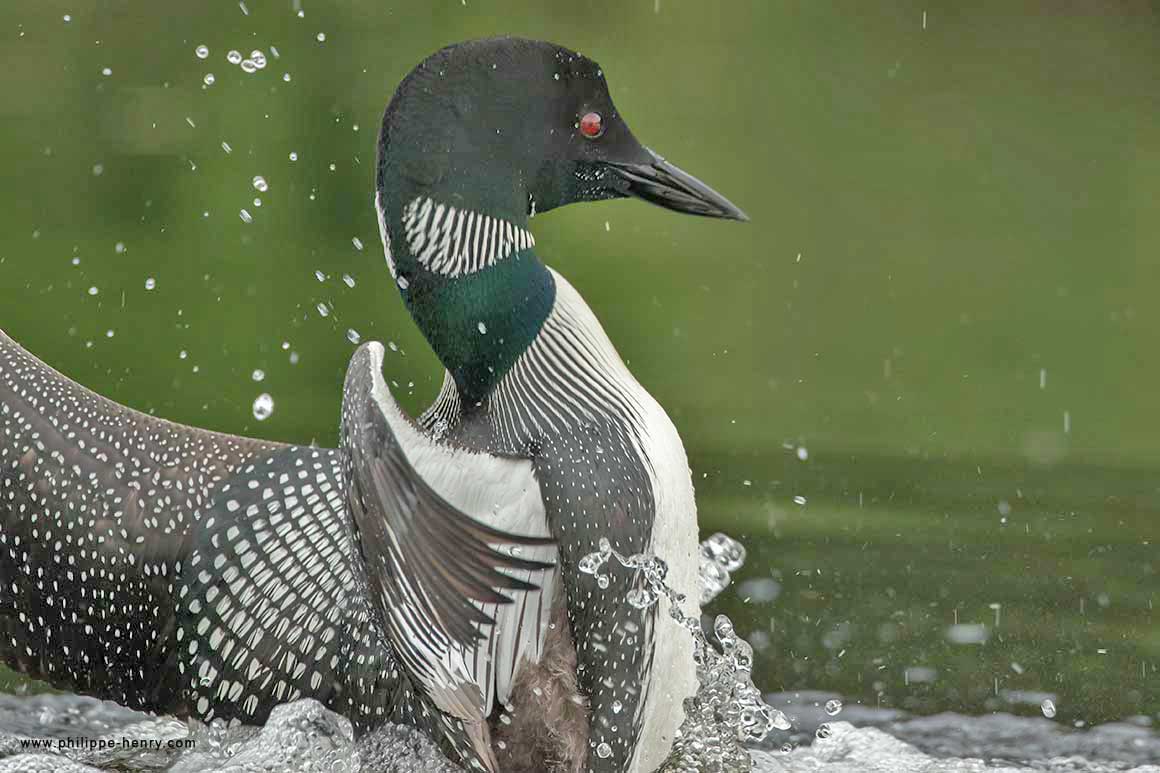

Fig.002,003- Intraspecific aggression is primarily vocal -a kind of yodel- often given from a low crouch position or an upright posture with wings extended horizontaly.
A few years ago, I and wildlife biologist Denis Masse went on one of the 150 lakes of this national park. It was a rainy June morning. Masse worked for the park's conservation service and wanted to verify whether a pair of common loons has used one of the nesting rafts built here. These rafts are never submerged by water and they allow the loons to carry out the incubation of the eggs even if the water level rises on the lake during heavy rains. I remember this spine-chilling call that made us jump. It was a throaty crescendo with yodel-like notes, the familiar but wild sound, male loons make when anxious or defending their territory. We soon caught a glimpse of the bird, floating like a cork between the waves. We stopped as we saw the first nesting raft in the distance. The binoculars gave us a close-up of the two large olive-green eggs dotted with irregular small darker spots. The female laid them at the center of the raft, on a little mount of vegetation and mud she picked up at the bottom of the lake. She was feeding close to the raft and soon returned and settled down on the eggs, staying still, likely thinking she will go unnoticed.
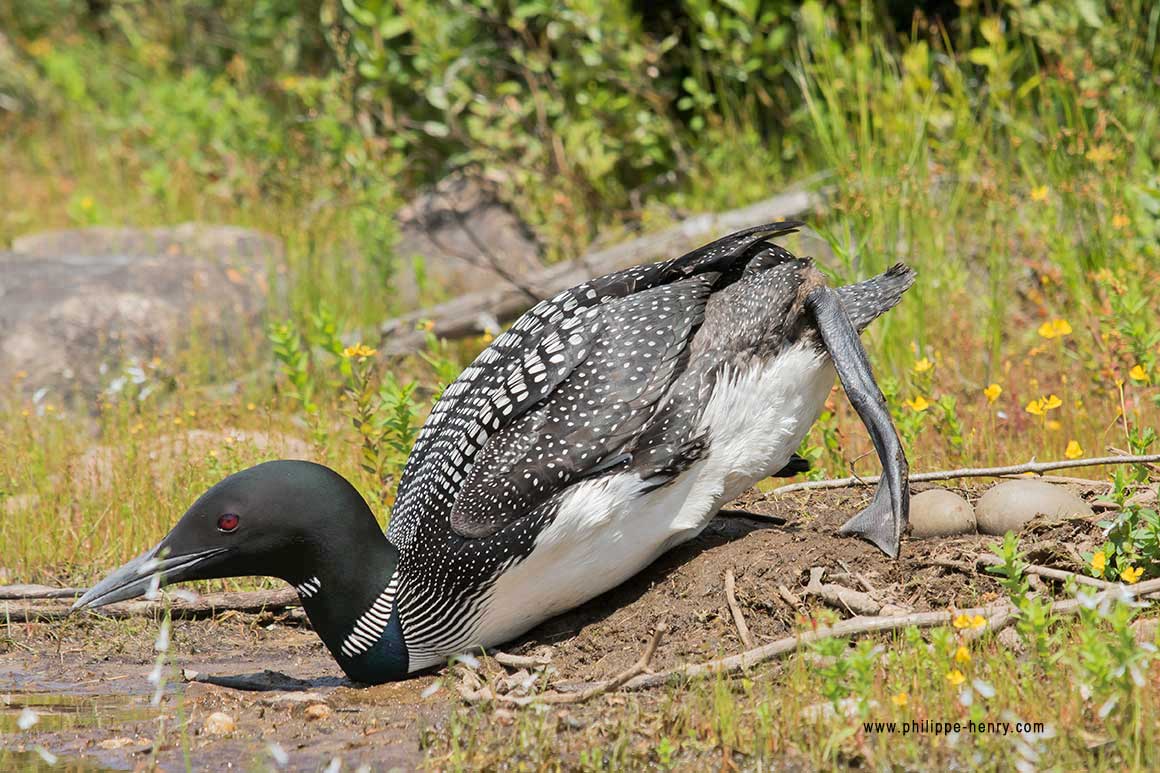
Fig.004- Loon legs are placed back on its body making them ungainly on land but allowing an excellent swimming.
The call of the common loon differs considerably depending on the context. The tremolo indicates alarm, annoyance or a greeting. Hoot is a one-note call use to locate family members. Yodel is a long raising call with several repeated notes used only by males defending territory.
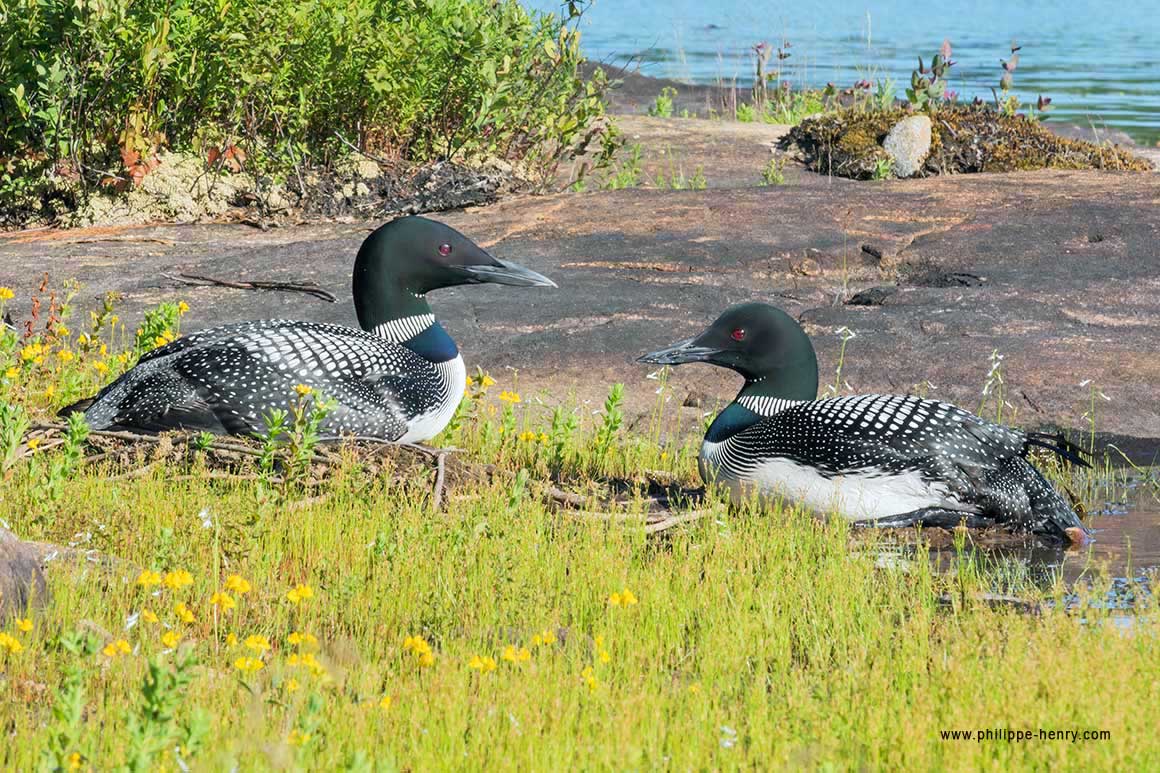
Fig.005- In la Mauricie, in the province of Quebec, loons built their nest in early June. Two eggs are laid and are incubated by both male and female.
Today, a few years after this canoe-trip with Denis Masse, who is presently retired, the park's conservation service led by Andre Valiquette is still involved with the common loon conservation. "Several measures have been successfully implemented, so that a significant increase in the number of territorial pairs in the park has been observed", he says. "In 2021 there were about 36 breeding pairs but, in the park as elsewhere in Canada over the past thirty years, there has been a decrease in the reproductive success of loons. Since 1987, the number of breeding pairs has increased by 30% in the park, but the average number of young loons produced in the territory has decreased".
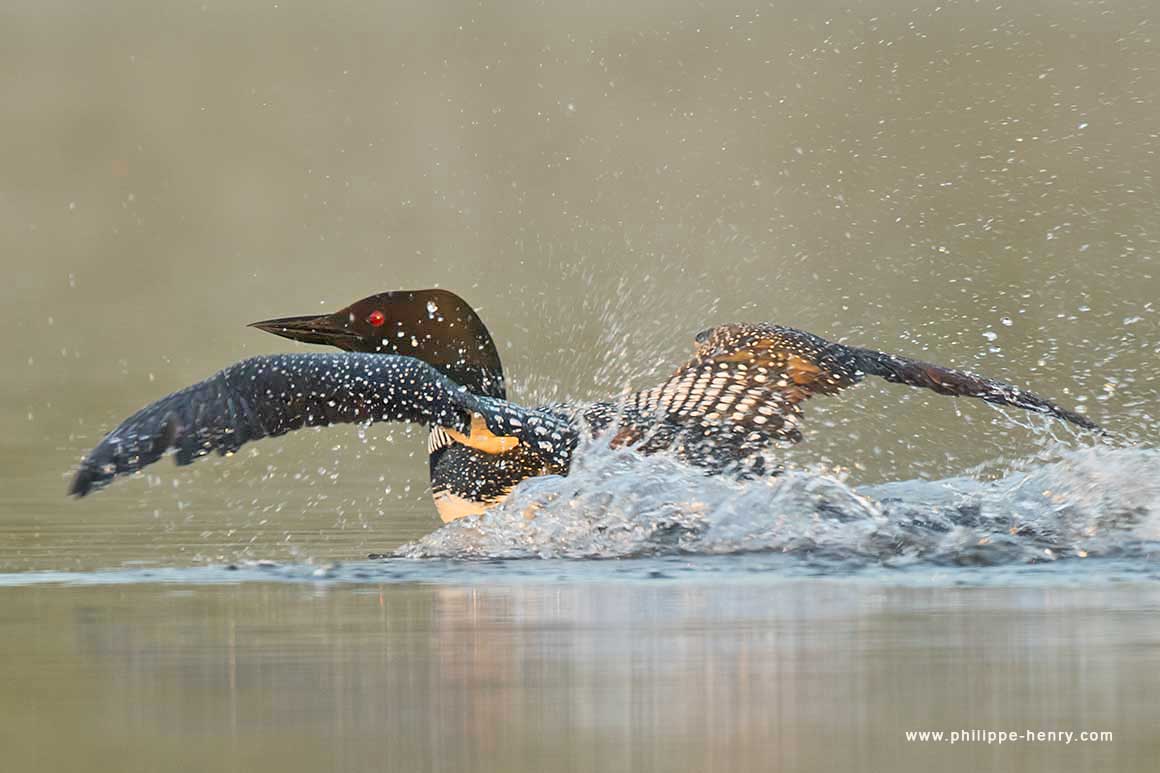
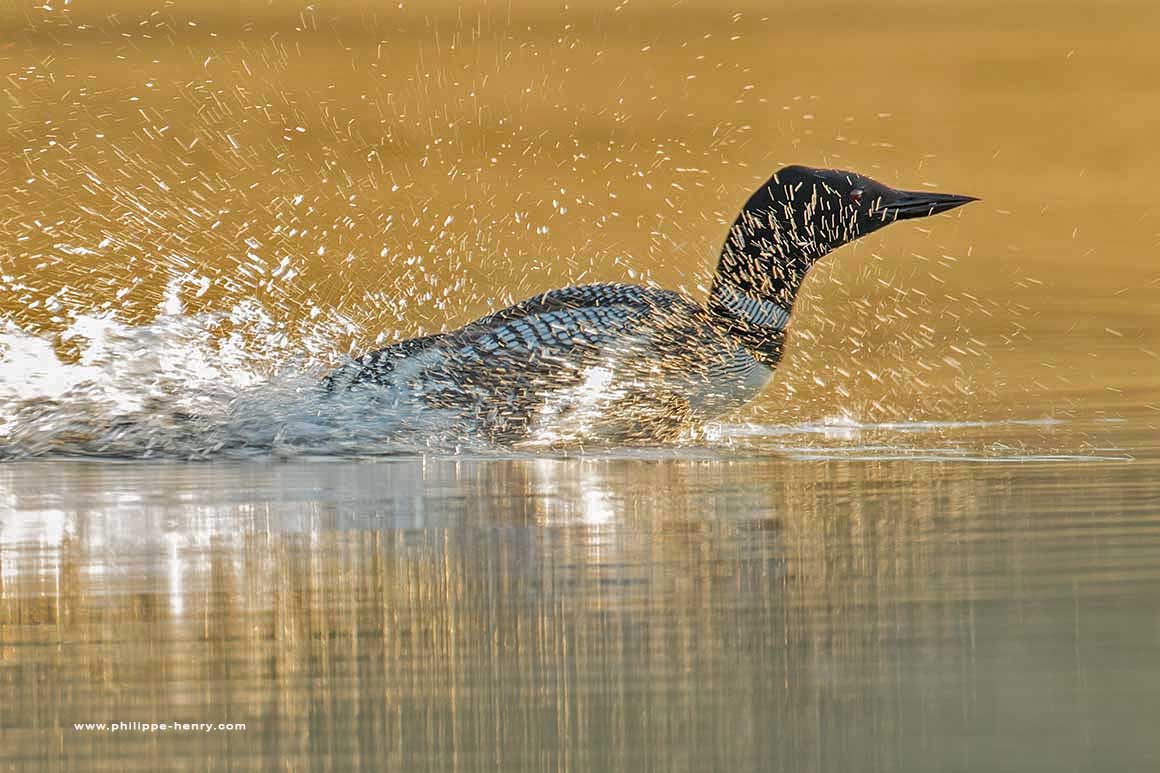
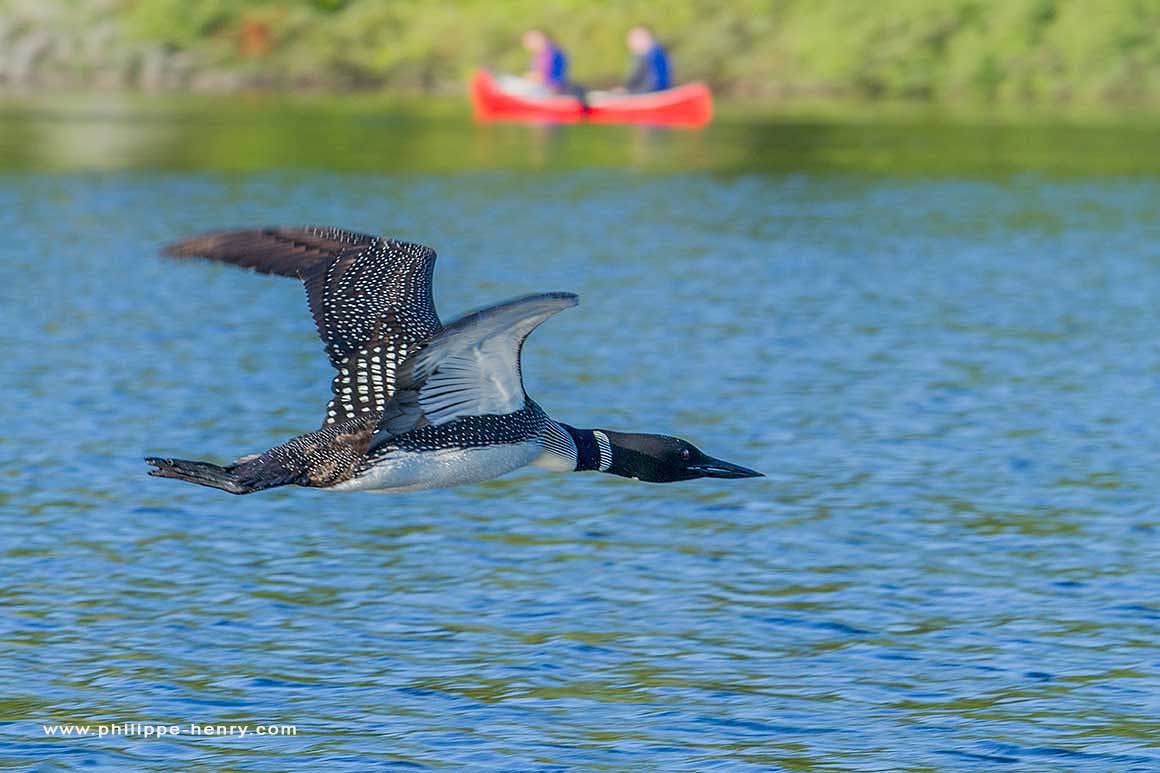
Fig.006,007,008- Loons often run on water for a long distance in order to gain speed to take off.
Since I arrived in Canada, I have photographed loons every year on the same lakes, in La Mauricie and elsewhere in Quebec. In 2022, heavy rains caused the flooding of most of the nests near which I had set hiding places to film and photograph. As I paddled back on a lake in the Wemotaci area, in Haute Mauricie, I found a flooded nest with two abandoned eggs half-submerged but still intact. The breeding pair that left it behind probably built another nest where the female laid a second clutch. However, if the second clutch takes place too late, the young will not be able to fly before the ice forms on the lakes and they will be trapped.
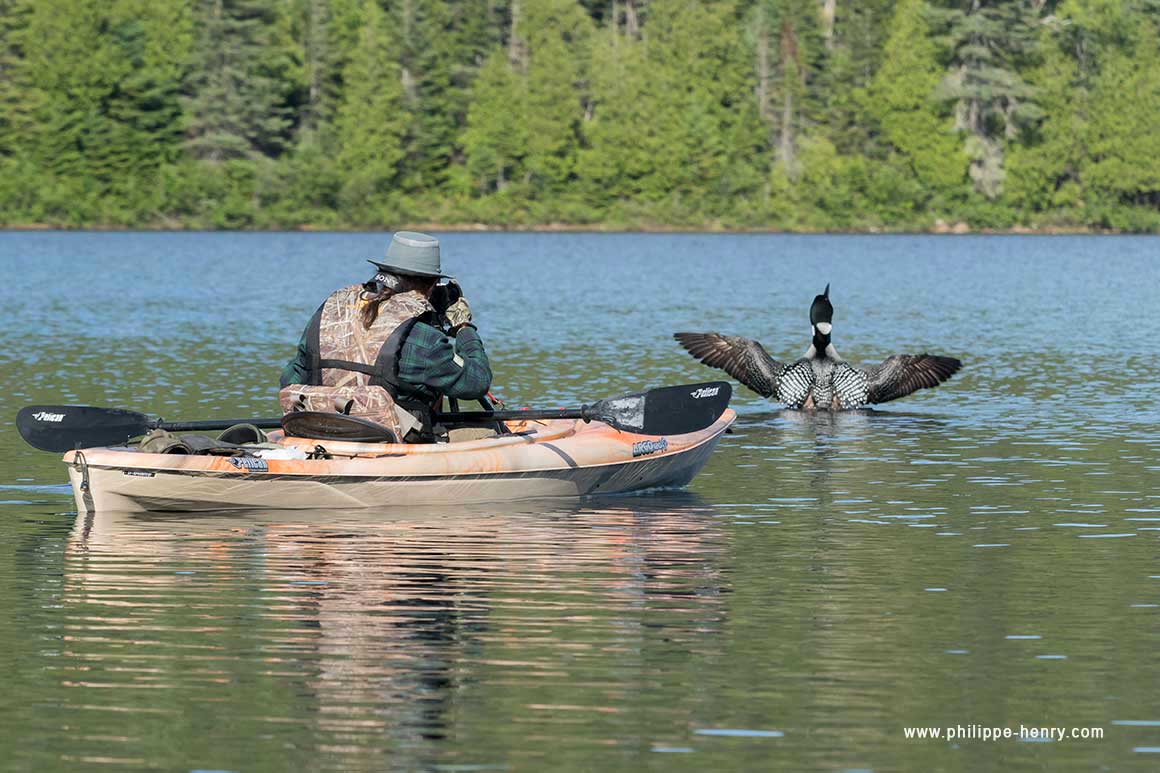
Fig.009- The presence of the common loon on the lakes of la Mauricie national park makes canoe trips more enjoyable. Many people come here to photograph or just to watch these beautiful birds.

Fig.010- A nest was built on the water's edge and the eggs were lost after a heavy rain. However, the pair may have a second clutch.
Beside of the natural threats of fluctuating water levels and predation, loons face an insidious threat from the very air they breathe. "If the flooding of nests is recognized as being the main cause of the failure of the breeding loons" says Valiquette. "Lake acidification and mercury have also been shown to cause lower productivity in loons".


Fig.011,012- Baby loons can swim immediately after hatching but the chicks spend a lot of time riding on their parents’ backs during the first several days of their lives.
Each year, tons of poisonous chemicals and heavy metals, the result of industrial processes, enter the atmosphere. One of these poisons, mercury, is released as a gas from coal-burning power plants in North America and as far away as Eastern Europe and China. The mercury is carried here by air currents and falls into the lakes attached to dust particles, rain and snow. And that's where it becomes perhaps the key threat to the reproduction and survival of Canada's common loons. As predators, loons are at the top of the food chain, feeding heavily on mercury-contaminated fish, accumulating mercury in their tissues with every bite, in turn making them less able to fight infections and more likely to have endocrinal problems. Both male and female loons get rid of some mercury when they moult. Females also transfer some of the mercury in their body to the eggs. But, in both cases, there are able to eliminate less mercury than they accumulate from feeding on contaminated fish.

Fig.013- We can often witness fights between the young chicks. A chick can become dominant and it is not uncommon to see only one fledgling in early fall.
In the past, a Canadian Wildlife Service study found that levels of mercury had become disturbingly high among common loons. In La Mauricie national park, 35 breeding loons were captured and feathers and blood samples were collected for mercury analysis. Leader of the study L. Champoux said "Mean blood and feathers mercury concentration were within normal range of samples from north-eastern North America. However, one-third of the birds had mercury levels exceeding the high risk level for health and reproduction".
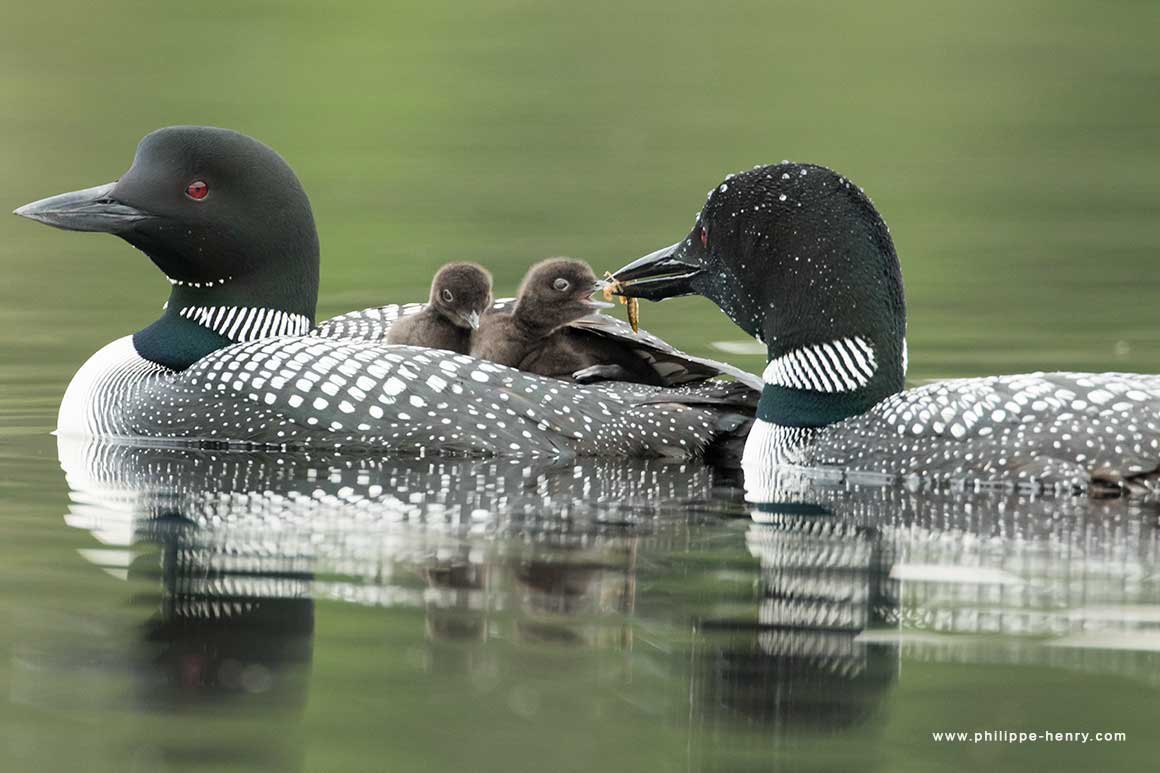

Fig.014,015,016- Chicks are dependent on their parents for food. One adult will stay with them while the other will catch fish to feed them.
Even if some mercury occurs naturally in Canadian lakes, industry remains its chief supplier. Human activity is also responsible for creating the conditions that lead to a deadly disease. Elevated levels of nitrogen and phosphorus, especially in the Great Lakes, result in alga blooms. They, in turn, help create conditions leading to outbreaks of Clostridium botulinum, a bacterium that causes avian botulism, which paralyses birds, leaving them unable to fly or hold their heads up. So the common loon doesn't have it easy.

Fig.017- Chicks are fed by the adults for several weeks. After three months they become independent and they can stay longer on the lake than their parents.
Every summer, thousands of visitors flock to the lakes to go kayaking and fishing, bringing them into contact with the breeding loons. This interaction disturbs the birds and their young, occasionally causing them to abandon their nest even before the eggs have hatched. "Faced with this problem" says Valiquette, "several conservation measures were implemented in La Mauricie national park, such as the ban on stopping on the islands, the ban on the use of lead fishing weights and the creation of certain conservation sanctuaries".


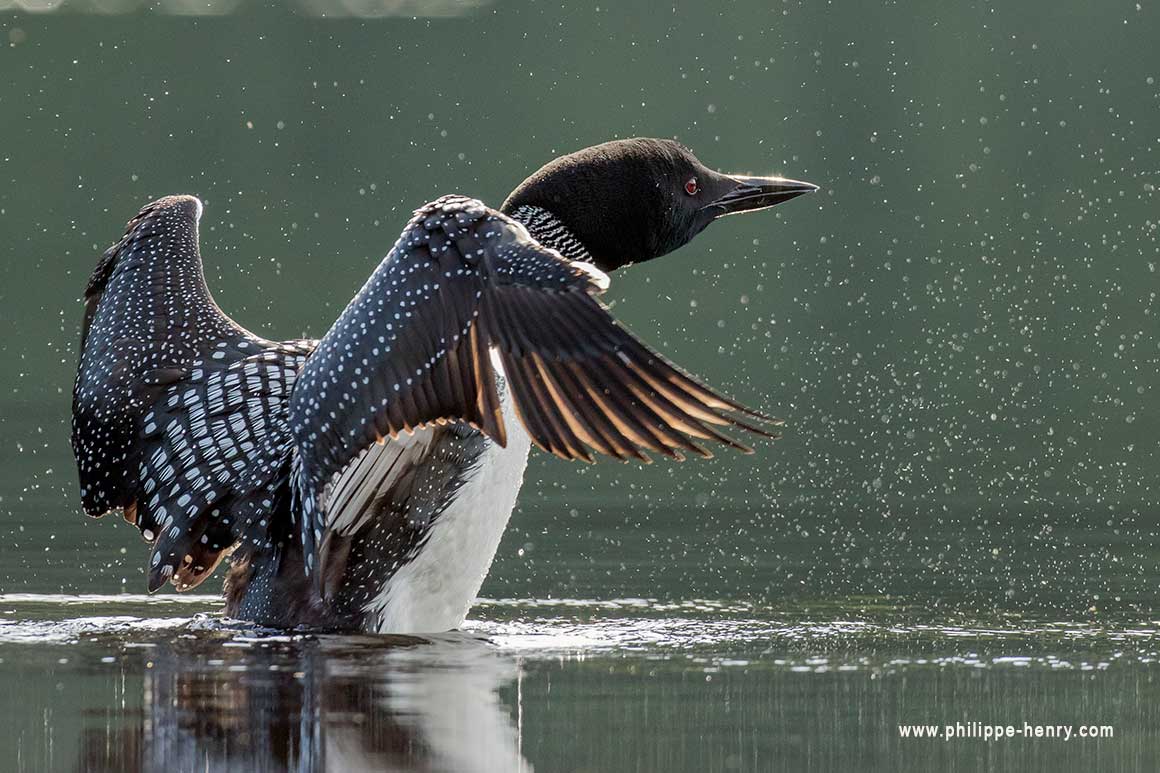
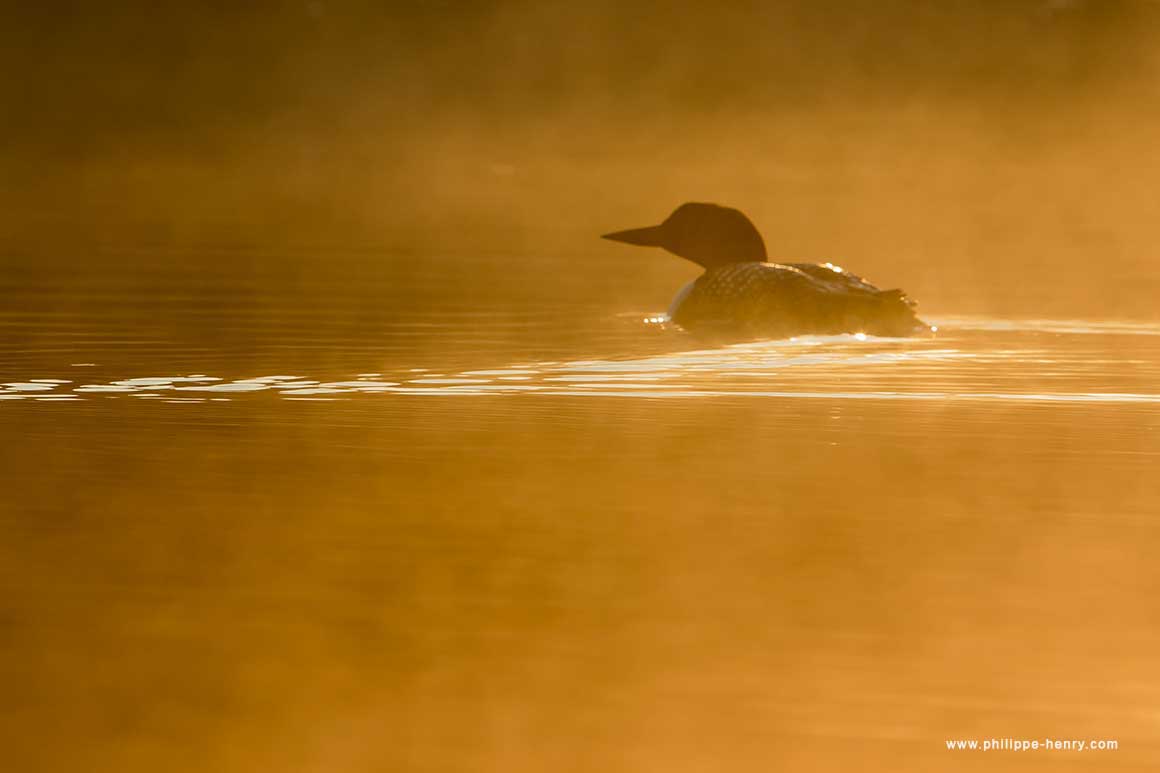
Fig.018,019,020,021- I have photographed the common loon since I arrived in Québec in 1994, it's my favorite bird and even today, when I go at daybreak for a canoe trip on a lake and when I hear its song through the mist, I still have goosebumps. I know that I will spend a wonderful day in their company.
The steady growth of resorts areas on the Canadian lakes frequented by common loons have substantially reduced its breeding range. Since they are very sensitive to disturbance during the nesting period, the birds have to seek refuge in our diminishing wild areas, making Canada's national parks prime breeding grounds for this species.
In late July 2022 I went for a canoe trip in the Northern part of the park. While I was out, the weather deteriorated and I decided to find shelter on the north shore. A soft, one-note hoot told me, I was not alone. A pair of loon fed the young under the rain which began to fall with force. An adult brought in a small trout which was quickly gobbled up by a youngster who seemed to have established his dominance rank "peck order" over the other youngster. This will determine the priority between them concerning the necessities of life and reproduction, namely food priority, priority of protection by the parent etc.
The presence of the common loon on the lakes of la Mauricie national park makes canoe trips more enjoyable. When they take off in late fall, I miss their tremolo and moaning calls. If they disappear from our lakes, a spark of life will have vanished. Our wilderness would never be the same.
Authors Biography & Contact Information
 Bio: Philippe Henry is a photographer specialized in wildlife and conservation, a writer and a filmmaker. He is based in La Mauricie, in Quebec. His last book - The Alligator of Texas- was published by Texas A&M University Press / USA. You can follow his photography and watch dozens of short video and film trailers on his facebook page. Photo of Philippe by Veronique Amiard.
Bio: Philippe Henry is a photographer specialized in wildlife and conservation, a writer and a filmmaker. He is based in La Mauricie, in Quebec. His last book - The Alligator of Texas- was published by Texas A&M University Press / USA. You can follow his photography and watch dozens of short video and film trailers on his facebook page. Photo of Philippe by Veronique Amiard.
E-mail: philippe_henry@hotmail.com
Website: www.philippe-henry.com
Phone number: 1 819 532 2513